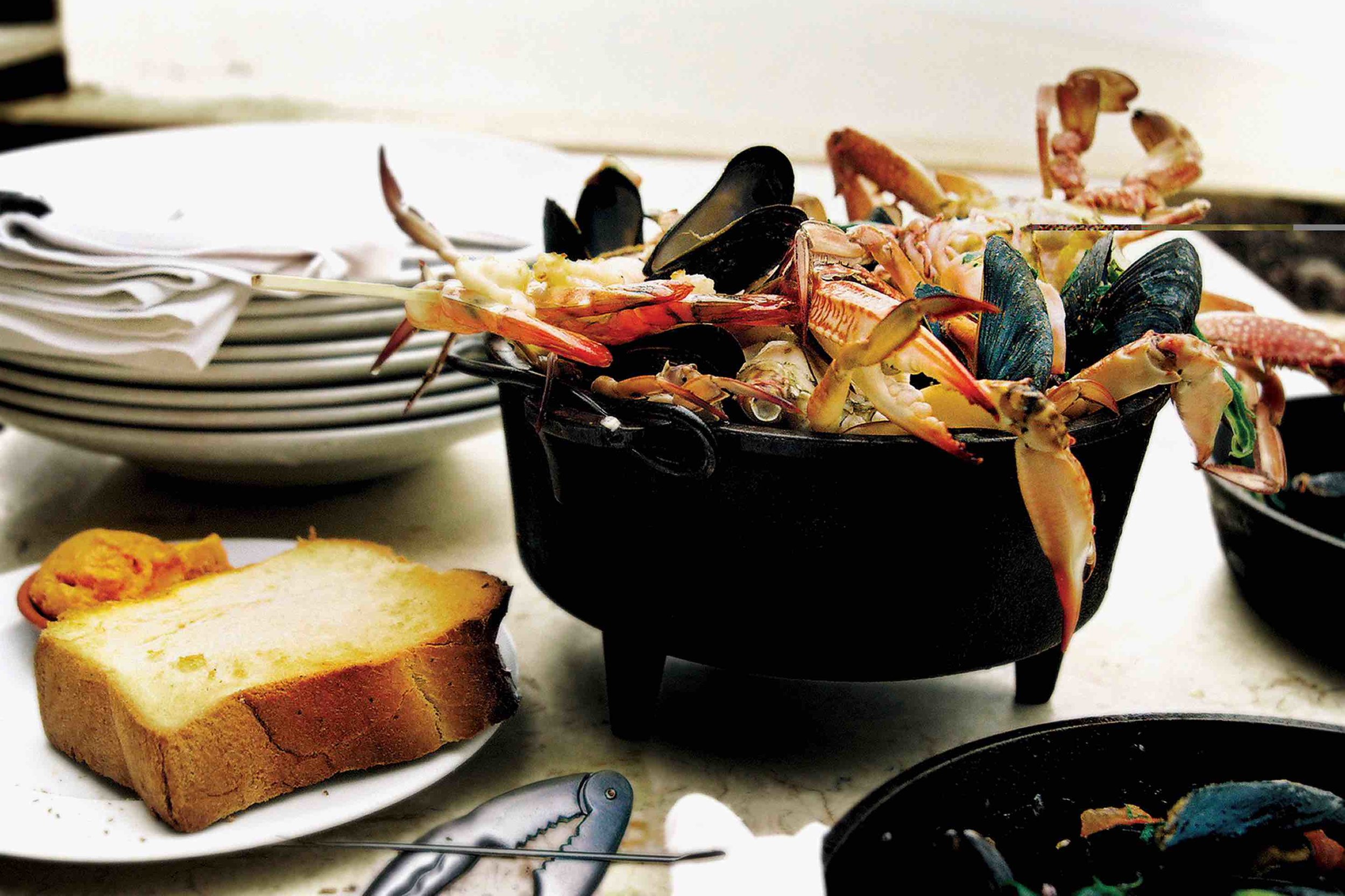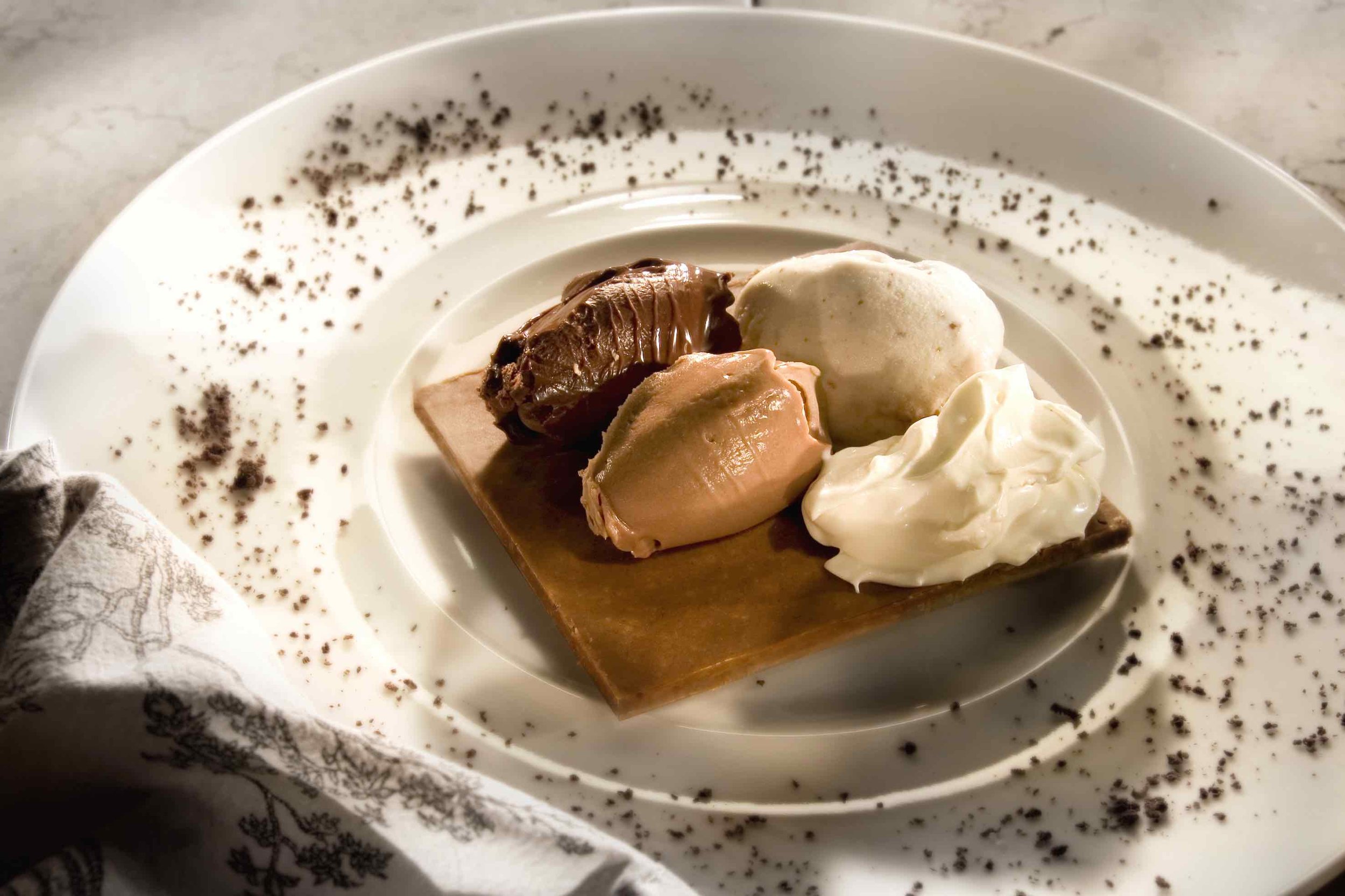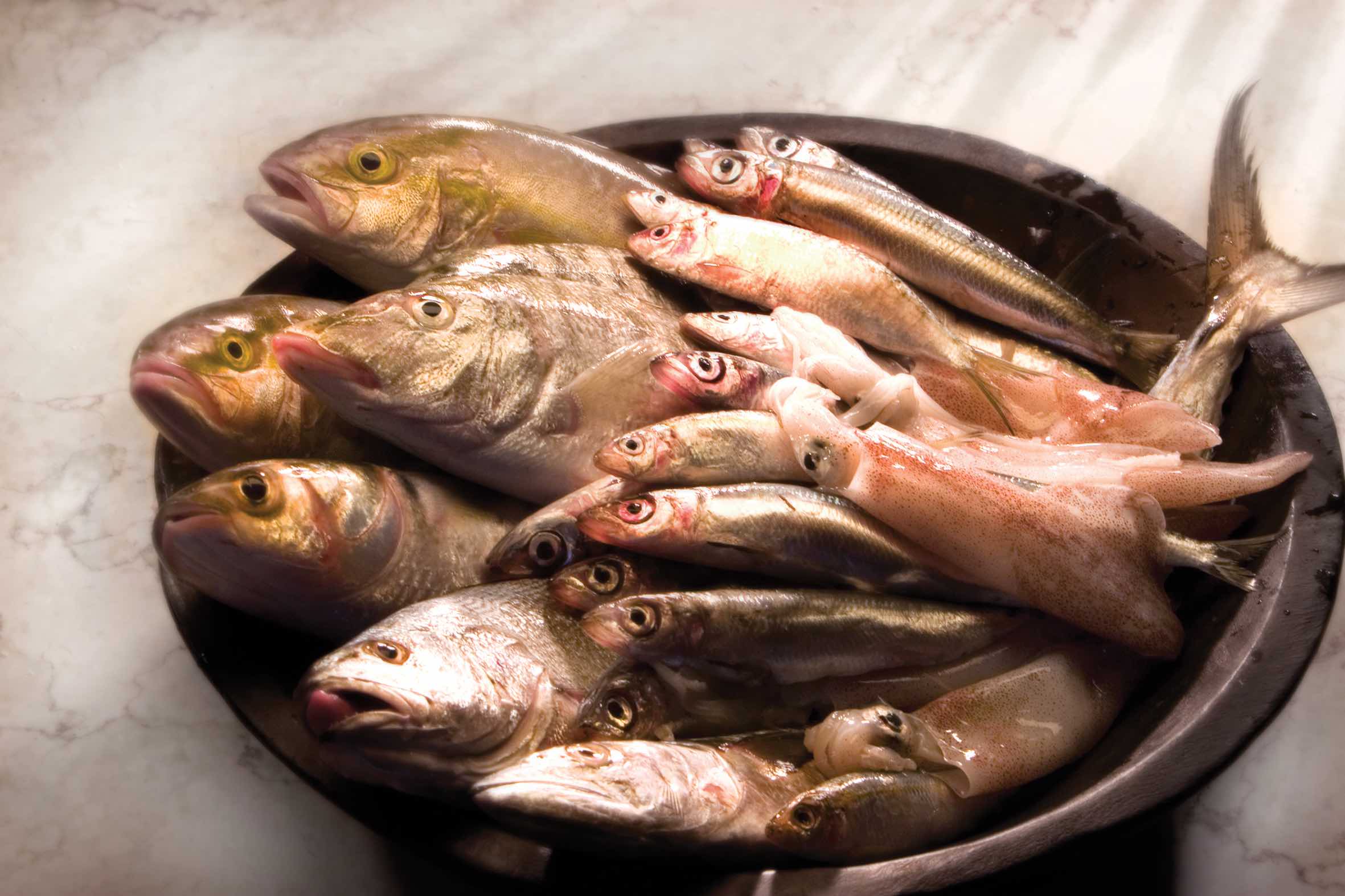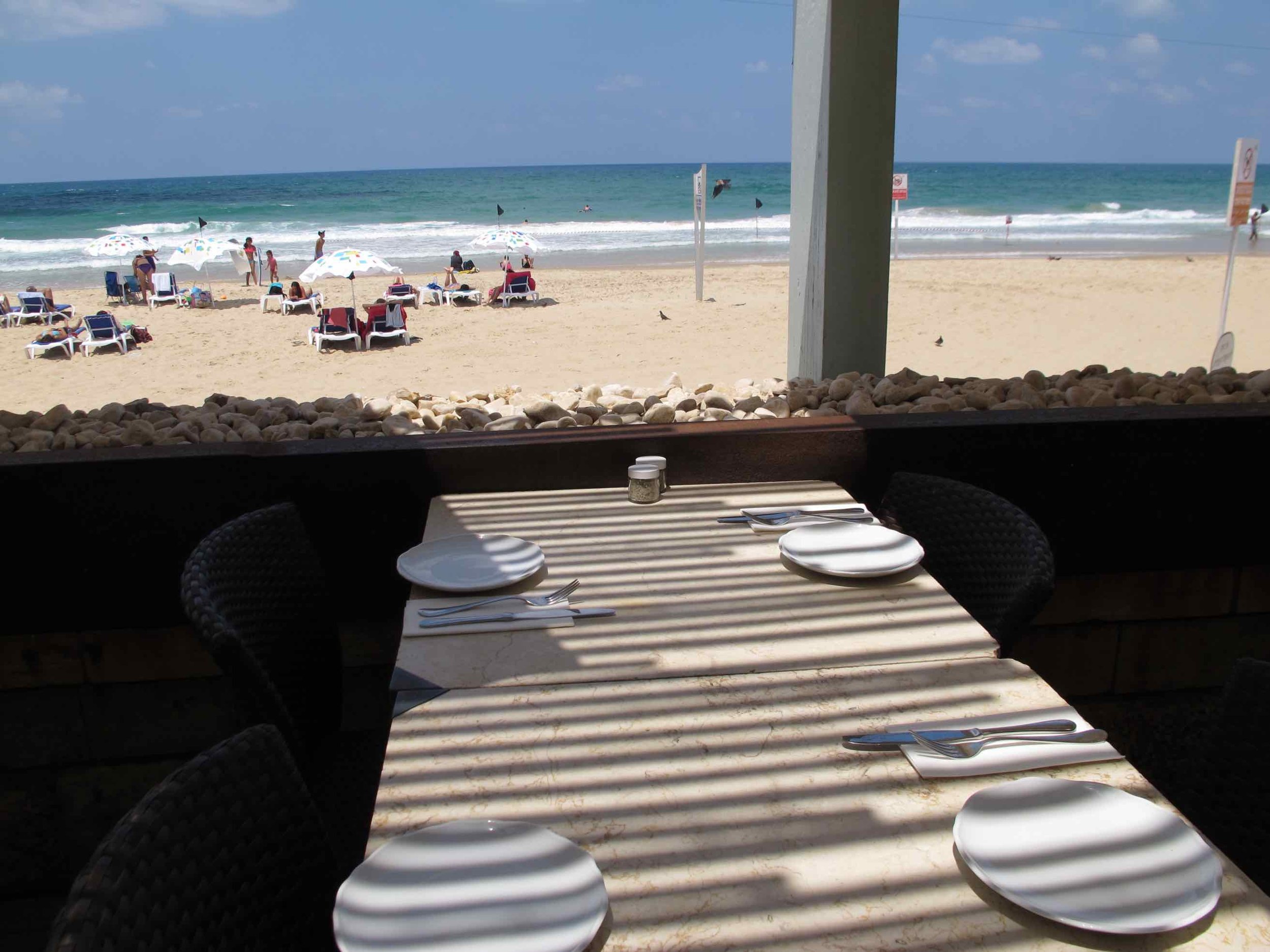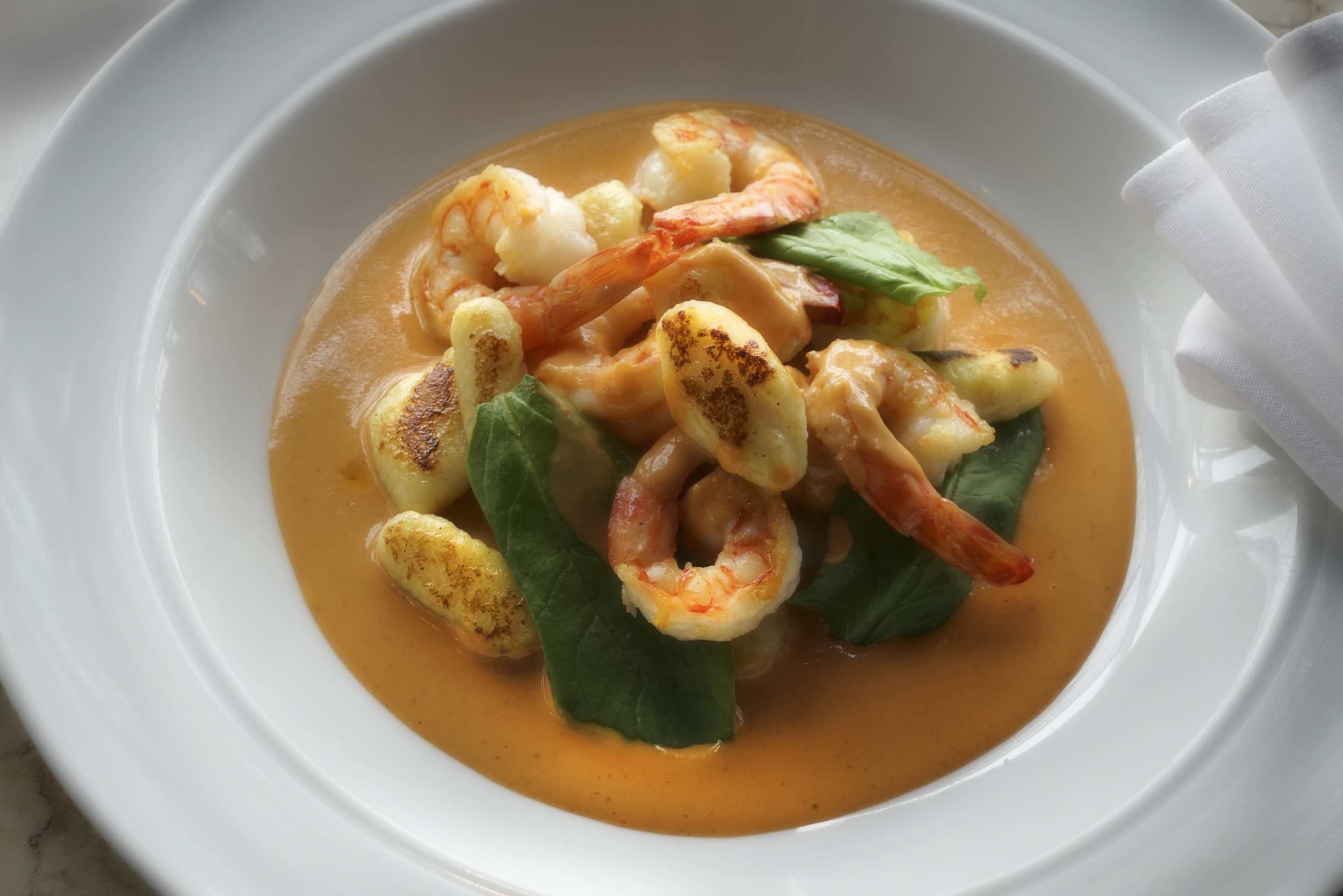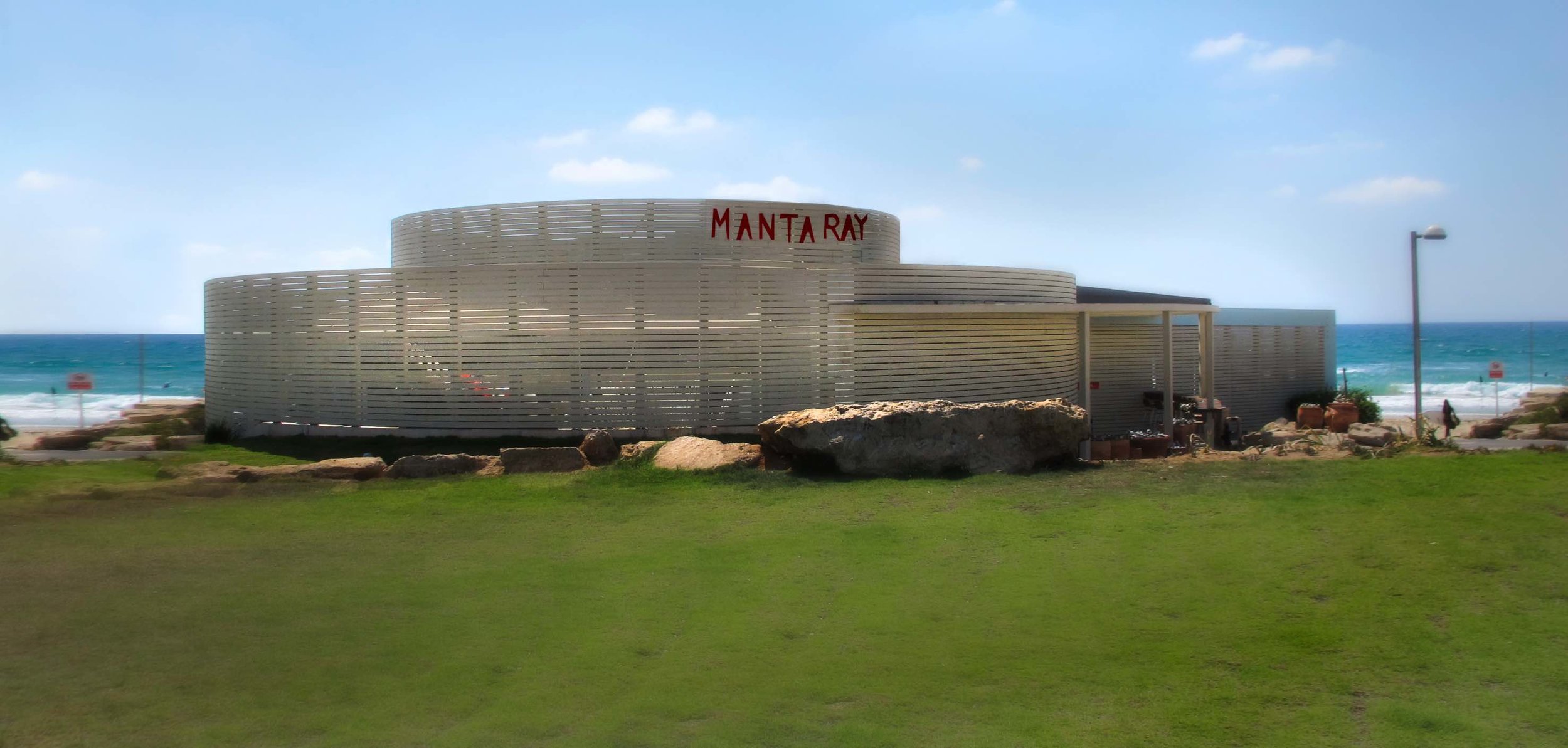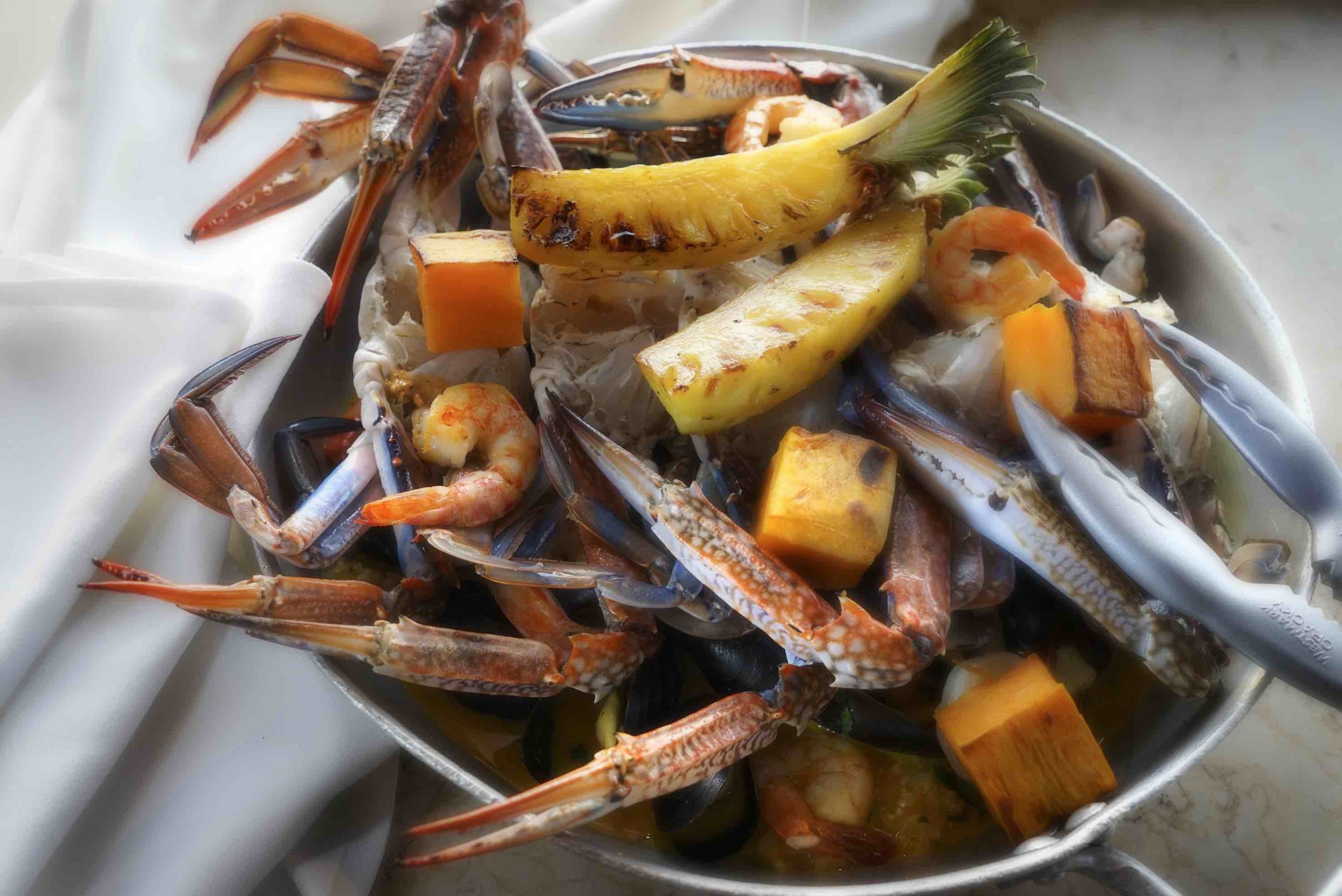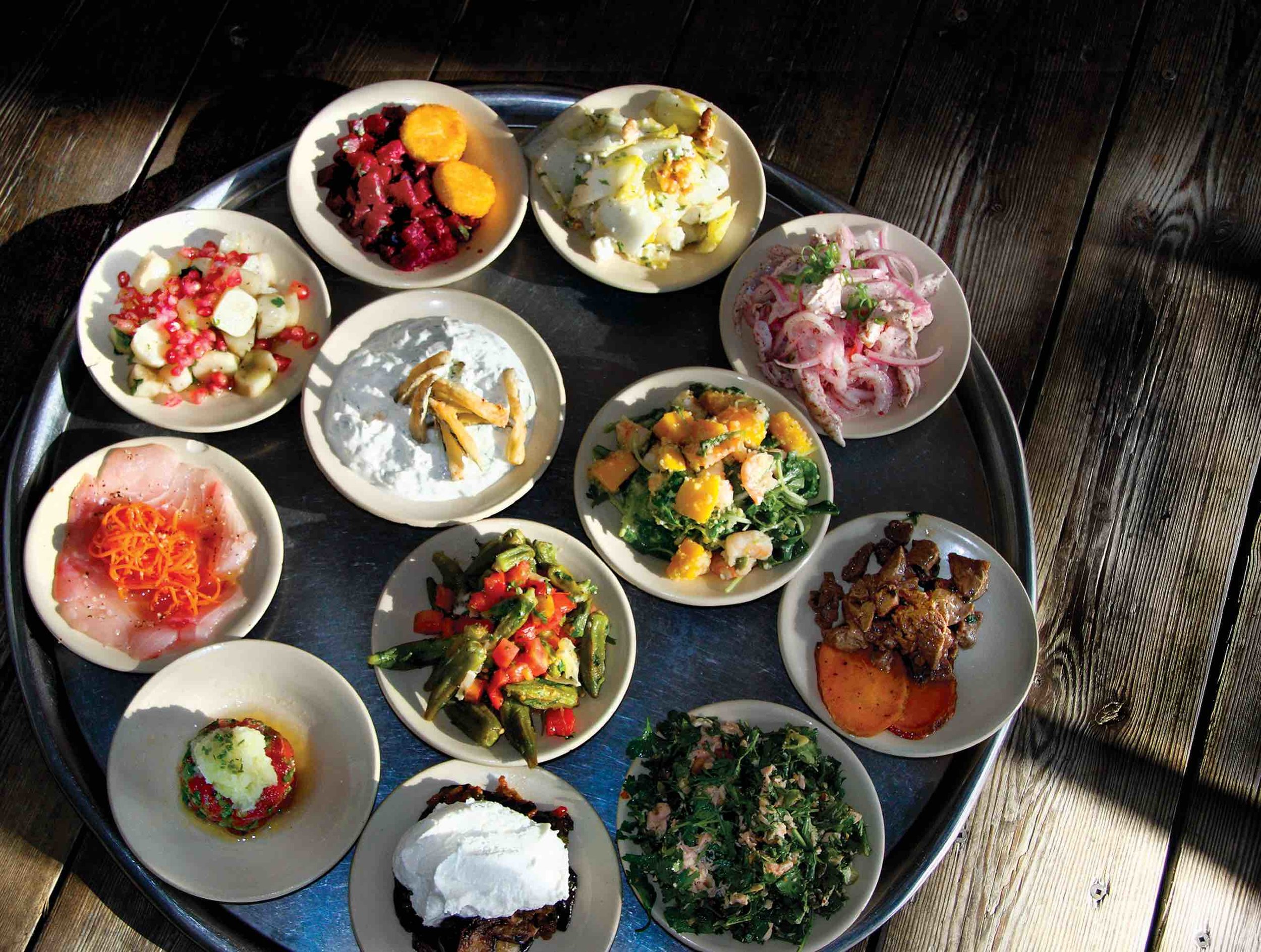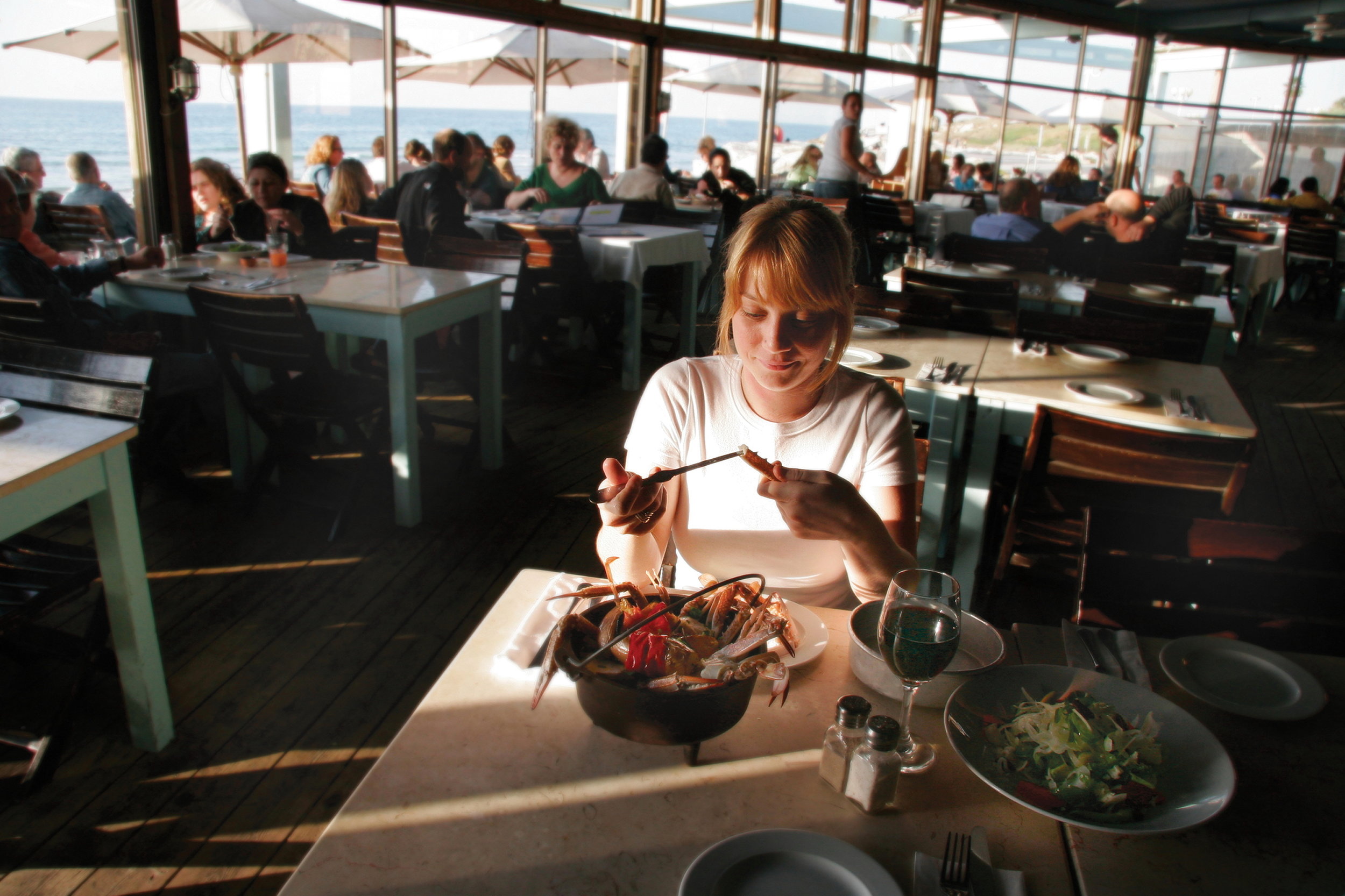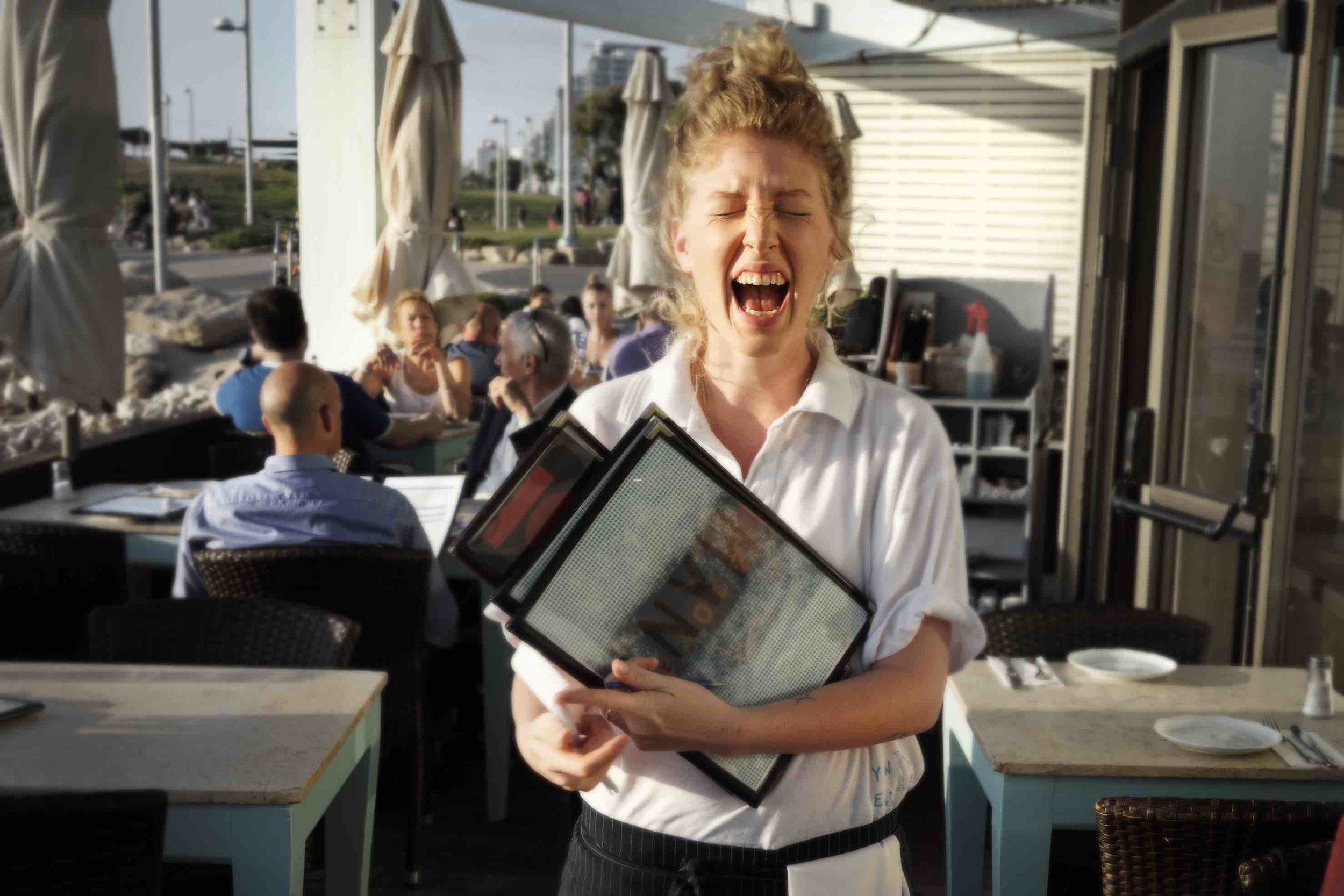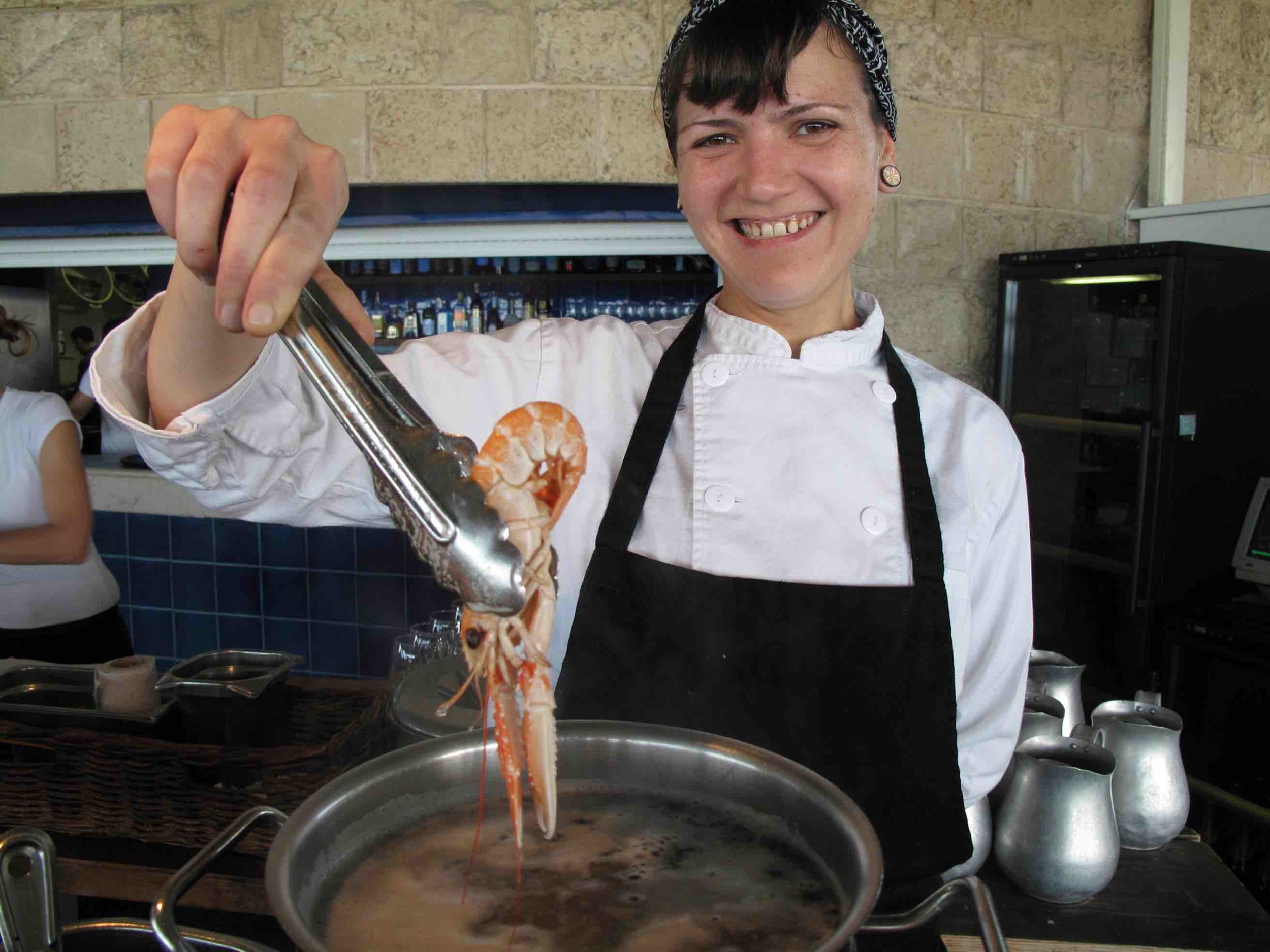We will ride for miles here, on the sturdy wooden boardwalk that dips and rises, mimicking the swelling of beach dunes. Designed by husband-and-wife architect team Udi Kassif and Ganit Mayslits Kassif, the handsome wide walkway won them the award for outstanding landscape architecture at the European Biennial of Landscape Architecture in 2010. It meanders through the Tel Aviv Port, which is packed with boutiques, cafés, and food markets; already visitors are heading here for their morning coffee, enjoying the proximity of the water. At night, the port glitters with the lights of restaurants, nightclubs, and performance spaces, and hums with the chatter of crowds and the jangle of street music.
Our ride takes us through upscale neighborhoods of stark white hotels and stylish beachside cafés shaded with gigantic, colorful parasols, an area where refreshing arak-and-grapefruit-juice cocktails are delivered by natty waiters to your place on a rented beach chair. Here, if you close your eyes, you can try to count the languages being spoken within earshot: Hebrew, Arabic, Russian, English, French, Italian, Spanish, and a few others that you might not be able to identify.
We pass funkier areas where beachgoers bring their own sandwiches and umbrellas, where children flop into shallow waves followed by slightly worried mothers, and elderly men are not shy to reveal ample naked bellies, bronzed from decades of basking in the Mediterranean sun. Out beyond the shore, a group of youngsters is trying to catch enough wave-swell to surf. We see a group of schoolgirls, buttoned up in traditional Orthodox tzniut outfits—elbows and knees modestly covered by their simple uniforms—as a gazelle-like male jogger, sporting only a black Speedo, sneakers, and reflective sunglasses, hurtles by them.
We ride by the Tel Aviv Port’s farmers’ market, already beginning to pulse with curious tourists, knowledgeable foodies, businesslike housewives. Inside this warehouse-sized space are vendors selling meats, fish, cheeses, wines, olive-oil products, cooking accessories, and more, as well as coffee shops where you can enjoy an espresso in the midst of the throng. This morning, happy shoppers are exiting the building with bags filled with fresh, ripe strawberries and savory bourekas, which many will tote down to the beach for snacking.
As ever in Israel, the old and the new, myth, faith, and contemporary reality are mingled together. As we continue toward Jaffa, our path winds through more harbor-like terrain. Fishermen lean on a wall above the plashing waves, waiting for their dinner to tug at the lines: fish that live nowhere else, with exotic nicknames like spinefoot and guitarfish. Against the old walls opposite sit ancient street monarchs, fully focused on games of backgammon and chess. Some distance into the water, a boulder juts upward: Andromeda’s Rock, named for the princess of Greek mythology who, it is said, was chained here as an offering to a sea monster, but was saved from its jaws by Perseus. A shapely rollerblader in a top hat weaves through the crowd, adroitly sipping pomegranate juice through a straw as she sails by. Buskers play a Middle Eastern hybrid of klezmer and bluegrass, a battered banjo case on the sidewalk filling up with shekels from appreciative passersby.
As we ride into Jaffa, we pass old warehouses now spiffed up into chic, cavernous restaurants, gallery spaces, organic-coffee shops, and bookstores. It’s almost impossible to imagine that just a few decades ago this area was so dilapidated that major parts of it were an environmental hazard. What was once a fifty-acre landfill of rubble by the shore has recently been cleaned out, smoothed, and made green and useable as Midron Yafo Park, or Jaffa Seaside Park (also known, less poetically, as Jaffa Landfill Park). The shoreline was reclaimed by the Municipality of Tel Aviv–Yafo, which removed and recycled the detritus and built a promenade along the shore with links to the port, the Givat Aliyah Beach, and the Bat-Yam area. The park, designed by Tel Aviv’s Braudo-Maoz Landscape Architecture, rolls with green lawns (irrigated with desalinated seawater) and neat paths, and is studded with playgrounds, shaded benches facing the sea, an amphitheater, and the bike lane along which we are riding. Its success is clear: on this beautiful day, the park is thronged with visitors from the city’s full spectrum of people.
Nearby, down Kedem Street, is the stunning striated box of a building that is the Peres Center for Peace, founded by Shimon Peres as headquarters for peace-building initiatives between Israel and its neighbors, and between Jewish and Arab citizens of Israel. Here, we veer inland, onto the cobbled lanes of Jaffa’s alleyways, in search of hummus. As the streets narrow, we gingerly disembark, return our bicycles to their rental spot, and walk, slowly regaining our land legs after ten or so kilometers of riding, which have taken us in one morning through so many layers of history and the vivid reality of the present.
Tel Aviv Port >
Tel Aviv Port Farmers’ Market >
Tel-o-Fun Bicycle Rentals >
Peres Center for Peace >




